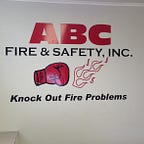Fire Extinguisher Regulations and Compliance in Commercial Settings
Introduction
Fire extinguishers play a crucial role in safeguarding lives and property in commercial settings by providing a first line of defense against small fires. However, to ensure their effectiveness, it is essential for businesses to understand and comply with relevant regulations regarding the installation, maintenance, and use of fire extinguishers.
In this article, we will delve into the regulations and compliance requirements for fire extinguishers in commercial settings, covering key aspects such as types of extinguishers, placement guidelines, inspection and maintenance schedules, training requirements, and penalties for non-compliance.
Understanding Fire Extinguisher Classes and Types
Fire extinguishers are classified based on the types of fires they can effectively suppress. The classes include Class A (ordinary combustibles), Class B (flammable liquids and gases), Class C (electrical fires), Class D (combustible metals), and Class K (cooking oils and fats). Each class corresponds to specific types of extinguishing agents, such as water, dry chemical powders, CO2, foam, and wet chemicals.
Regulations for Fire Extinguisher Installation and Placement
Regulatory agencies such as the National Fire Protection Association (NFPA) and Occupational Safety and Health Administration (OSHA) provide guidelines and standards for the installation and placement of fire extinguishers in commercial buildings. Key considerations include:
Number and Coverage: The number and types of extinguishers required depend on the size, occupancy, and fire hazards present in the building. Extinguishers should be easily accessible and located near potential fire risks.
Mounting Height: Extinguishers should be mounted at accessible heights, typically not exceeding 5 feet from the floor.
Signage: Proper signage indicating the location and type of extinguisher should be visible and unobstructed.
Inspection, Maintenance, and Testing Requirements
Regular inspection, maintenance, and testing of fire extinguishers are essential to ensure their functionality in emergencies. Compliance requirements typically include:
Monthly Inspections: Visual checks for accessibility, pressure gauge readings, and physical damage.
Annual Maintenance: Detailed inspections, internal examinations, and refills or replacements as necessary by certified professionals.
Hydrostatic Testing: Required at specific intervals for certain types of extinguishers to check cylinder integrity and pressure holding capabilities.
Employee Training and Fire Safety Programs
Business owners are responsible for providing adequate training to employees on the proper use of fire extinguishers, evacuation procedures, and fire safety protocols. Training should cover:
Identifying Fire Classes: Educating employees on the types of fires and the appropriate extinguisher types for each class.
Operation Techniques: Hands-on training on how to operate different types of extinguishers safely and effectively.
Emergency Response Plans: Familiarizing employees with evacuation routes, assembly points, and communication procedures during fire emergencies.
Penalties for Non-Compliance
Failure to comply with fire extinguisher regulations can result in serious consequences, including fines, legal liabilities, increased insurance premiums, and, most importantly, compromised safety for occupants. Insurers and regulatory authorities may conduct audits or inspections to ensure compliance with fire safety standards.
Conclusion
In conclusion, adhering to fire extinguisher regulations and compliance standards is paramount for ensuring fire safety in commercial settings. By understanding the classifications, installation requirements, inspection schedules, employee training needs, and consequences of non-compliance, businesses can create safer environments and mitigate the risks associated with fire emergencies. Regular audits, training programs, and partnerships with certified fire safety professionals are essential steps toward maintaining compliance and protecting lives and property effectively. Prioritizing fire safety not only meets regulatory obligations but also fosters a culture of preparedness and resilience within organizations.
